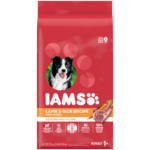
What Is Healthy Dog Poop? While you don’t want to make an inspection part of their daily routine, keeping an eye out for signs that something might be amiss with their health could help ensure they feel their best and catch any serious problems early.
As part of your regular assessment of your dog’s poop, there are various aspects you should keep an eye out for; each can serve as an indication of an underlying health issue which you and your veterinarian will need to address. When combined, the shape, size, consistency, content and color provide key insight into their overall wellbeing.
Consistency: Your dog’s stool should ideally resemble log-shaped and in one piece, proportionate with how much food they’ve eaten. This indicates they are receiving enough fiber in their diet to efficiently absorb and digest their food in their large intestine.
Your dog needs water in order to maintain a healthy weight. If his or her stools become hard or dry, this could be a telltale sign of dehydration which will create issues when trying to expel waste.
Stool Consistency Scale: There is a standard stool consistency scale ranging from one (rock hard) to seven (diarrhea). An optimal consistency score would be two or three.
Size: Your dog’s poop should be solid yet slightly squishy and log-shaped so it can easily be picked up without straining to do so. Furthermore, its size should correspond with how much food he’s eaten; you should be able to pick it up without straining when it comes time for cleaning up after them.
Mucus Poop: When your pup’s poop is thick and sticky, this could be a telltale sign of inflammation in his gut or colon caused by parasites or infections such as Giardia.
Color: Dark chocolate brown is considered ideal, while any changes to its hue indicate potential issues that need to be addressed with your veterinarian. Yellow or orange-tinged poop could indicate liver, gallbladder or bile duct issues while pink-hued or magenta colored poop could signal hemorrhagic gastroenteritis symptoms.
Grey: An unusually shiny and greasy gray poop could be a telltale sign that your pup is digesting his diet improperly or is suffering from digestive conditions, such as an ulcer or pancreas disease.
White: Spots of white poop could be an indicator of worm infestation, especially if your pup has had digestive problems or diarrhea in the past.
Red/Purplish Poop: Red or purplish colored dog poop can indicate blood in its stool, potentially due to infection, ulcer or blockage issues. This should be treated promptly by consulting with a vet.
All of these traits may indicate an underlying health problem in your dog, so it is always best to visit the veterinarian as soon as you notice a change in his/her poop so they can receive necessary treatments and remain happy, healthy, and pooping happily! This will ensure they receive proper care so they stay happy, healthy and continue pooping happily!











